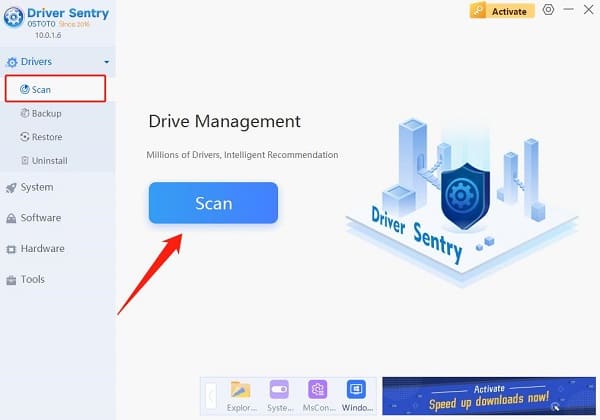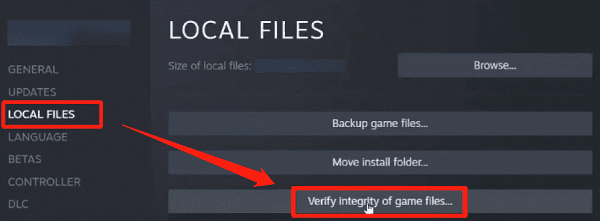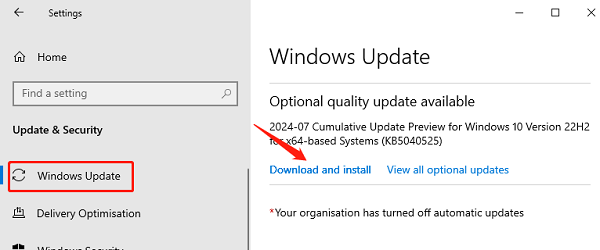
Ghostwire: Tokyo is an eagerly awaited action-adventure game, but some players may face persistent crashes during gameplay. This article will provide effective methods to help you resolve this issue and enjoy smooth gaming.
1. Check Minimum System Requirements
Operating System: 64-bit Windows 10 (version 1909 or higher)
Processor: Core i7 4770K @3.5GHz / Ryzen 5 2600
Memory: 12 GB RAM
Graphics Card: GTX 1060 / RX 5500 XT / Arc A380(VRAM 6GB or higher)
DirectX: Version 12
Storage Space: 26 GB available space
Additional Notes: SSD Storage, Please check Intel's website for Arc compatible CPU and motherboard requirements.
If your device does not meet these requirements, you may need to upgrade your hardware.
2. Update Graphics Drivers
Outdated graphics drivers can lead to game crashes, so it's essential to update them promptly. We recommend using Driver Sentry to automatically detect and update drivers, saving time and avoiding the risk of downloading or installing incorrect drivers.
Click the download button to get the latest version of Driver Sentry, install it, and open the software.
Click "Scan" to check for any uninstalled or outdated drivers. Find the graphics driver in the results list and click the "Upgrade" button.

After updating, it's advisable to restart your computer to ensure the new drivers take effect.
3. Verify Game File Integrity
On Steam:
Open the Steam client and log into your account.
Go to your Library, find Ghostwire: Tokyo, right-click, and select "Properties".
In the pop-up window, click the "Local Files" tab, then click "Verify Integrity of Game Files". Steam will scan the game files.
After completion, Steam will automatically repair any damaged or missing files.

On Epic Games:
Open the Epic Games Launcher and log into your account.
Go to your Library, find Ghostwire: Tokyo.
Click the three dots menu next to the game and select "Verify". Epic Games will check and repair the game files.
4. Adjust Game Settings
Launch Ghostwire: Tokyo and enter the main menu.
Select "Options" or "Settings".
Locate "Graphics Settings" and lower the resolution, shadow quality, and other graphical effects.
Try turning off V-Sync and Anti-Aliasing.
Ensure the "Frame Rate Limit" is set to a suitable level for your computer.
Save the settings and restart the game to check if the crash issue is resolved.
5. Disable Steam Overlay
Open the Steam client and go to your Library.
Find Ghostwire: Tokyo, right-click, and select "Properties".
In the "General" tab, uncheck the option for "Enable Steam Overlay".

6. Stop Overclocking
If you are using overclocking software (such as MSI Afterburner, CPU-Z, etc.), open the software and restore the CPU, GPU, and memory frequencies to default.
If you have overclocked in the BIOS, restart your computer and enter BIOS (usually by pressing F2, DEL, or ESC during startup).
Find the "Overclocking" settings and set them back to "Default" or "Auto".
Save the settings and exit BIOS, then restart your computer.
7. Update Windows System
Press Win + I to open Settings and select "Update & Security".
Click "Check for updates", and the system will automatically search for available updates.
If updates are available, click "Download and install", then follow the prompts to complete the update.

After updating, restart your computer to ensure changes take effect.
8. Disable Third-Party Antivirus Software
Find the antivirus software icon on the taskbar, right-click it.
In the pop-up menu, select "Disable" or "Turn off protection".
Choose the duration for which you want to disable it, typically "Until next restart" or "Temporarily disable".
Please note that disabling antivirus software may expose your system to risks, so be sure to re-enable it after gaming.
Following these steps should help you fix the crash issues in Ghostwire: Tokyo and ensure a smooth gaming experience. If problems continue, consider reaching out to technical support or checking relevant forums for more help.
See also:
How to Fix Black Screen of Death in Windows 10
7 Ways to Fix Helldivers 2 Black Screen on Startup